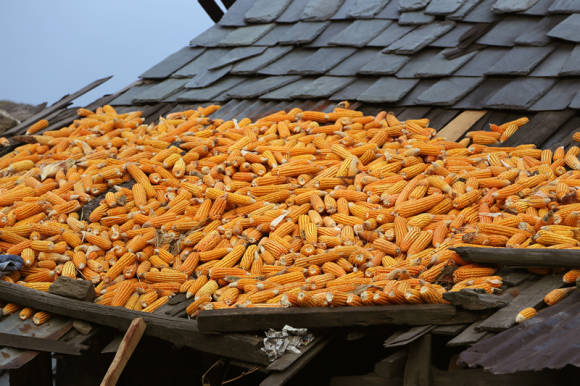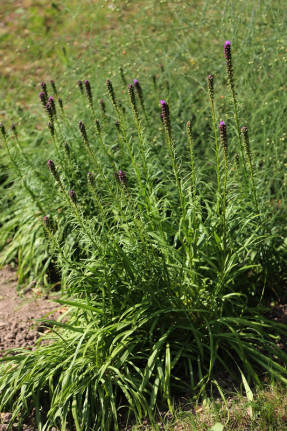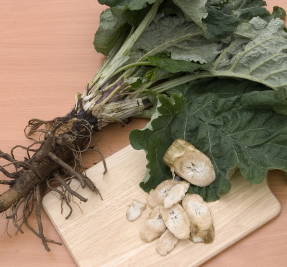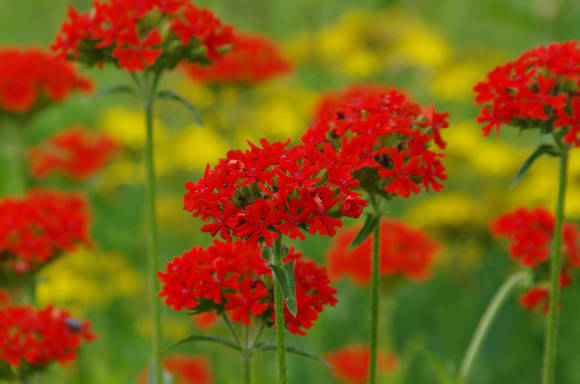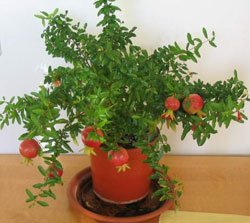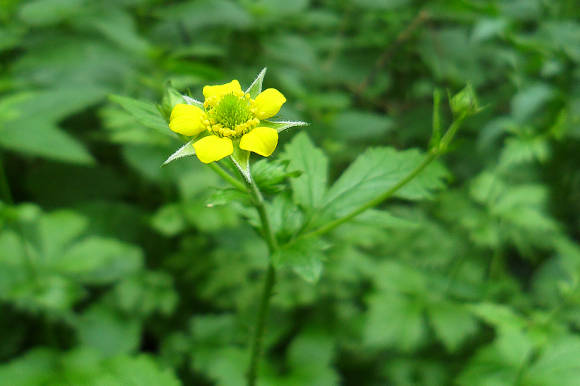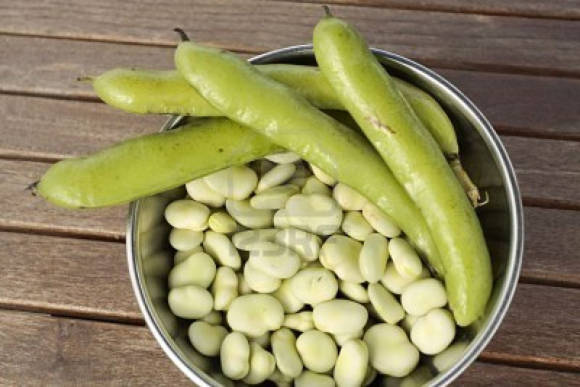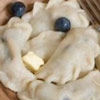
Probably, there is not a single vegetable garden where parsley would not grow. It is a favorite green culture of all countries and peoples. Meanwhile, many, many centuries ago, in its homeland, in the Mediterranean, it was more valued as a medicinal plant. The inhabitants of Ancient Greece and Rome called it "petroselinum" - literally: celery growing on stones - and the plant was dedicated to the wife of the ruler of the underworld, Persephone. And the Poles, keeping the Latin root "Peter", began to affectionately call the plant "parsley", from where the word passed into Russian.
The full name of the plant is curly parsley (on Latin - Petroselinumcrispum). This biennial vegetable plant belongs to the umbellate family, or, as they often write now, celery (Apiaceae). There are two of its subspecies - crispum (leafy varieties originated from it) and tandberOsum (it includes all varieties of root parsley). In turn, leaf parsley subdivided into two forms - with curly and smooth leaflets.
I think there is no need to describe this plant. Therefore, let's go straight to its centuries-old history.
From the history of parsley
Parsley is much more than just a spicy-flavored garden crop added to salads and vegetable stews.
Of course, most ancient doctors knew about it. For Hippocrates and his entourage, parsley was a favorite diuretic. Dioscorides used "stone celinone" for female diseases associated with menstrual irregularities, and also as a diuretic. Galen did not forget about parsley, especially with edema.
In the Middle Ages, Albert Magnus (1193-1280) used parsley for kidney stones. Paracelsus also mentions its diuretic and stone-promoting properties. And the great herbalist and botanist of the 16th century Leonard Fuchs used this plant for bloating, postpartum hemorrhage, and of course, as a diuretic.
Avicenna called parsley "futrasaliyun" and recommended to use it to give a pleasant smell from the mouth. In addition, he believed that "parsley drives urine and periods, cleanses the kidneys, bladder and uterus." However, for lactating women, he considered her harmful, since, in his opinion, she could spoil milk and arouse base instincts. By the way, according to ancient and modern herbalists, some of the celery crops grown in our garden can enhance sex drive. This is lovage, celery, and parsnips.

The healing properties of parsley were known in antiquity and in Russia. Here is what is written about her in the book "Cool Vertograd" (1616):
“Petrosilian grass or parsley is naturally hot and dry in the second foot and in the third.
1. And it has two-way strength, easily motivates urine, and the witches should be welcomed by those who suffer with the stone.
2. The herb petrosilian seed is worthy of the acceptance of wives, who suffer from the imprisonment of the menstrual, even from the acceptance of this, the disease completely proceeds. The same seed of velmi is appropriate for those who have no wind inside.
3. The same seed is crushed, we apply it to bodily impurity, and thus the body will become pure.
4. The same seed is received;
koi swell in body; before that seed dries up, and drives out, and exterminates harmful mucus and leprosy from the whole body, which leprosy is born from thick phlegm; and will bring disease from the liver, and from the bladder, and from the lower back. "
And today, parsley takes pride of place in many pharmacopoeias of the world.
What are the tops and roots rich in

Everything is used for parsley: seeds, grass, and roots. But these parts, despite similar pharmacological properties, differ somewhat in composition and ratio of different groups of biologically active substances.
Let's start with the essential oil, the presence of which gives out the wonderful spicy aroma of this plant.In different parts of the plant, its content differs markedly: in the grass and roots it does not exceed 0.5%, and in the seeds it reaches 7%. Therefore, seeds are less commonly used in medicine than grass (aboveground mass) and roots. The main components of the essential oil are phenylpropanes, in particular myristicin (up to 80% depending on the variety), apiol (about 18%), small amounts of β-pinene, β-pellandrene, limonene, allyl tetraoxybenzene, phenols. Myristicin and apiol are the main "culprits" of the strong, not only diuretic, but also abortive effect of parsley fruits.
In the Middle Ages in German-speaking countries, the streets where the girls of easy virtue stood were called Petersiliengassen - "parsley lanes", which is due to the fact that parsley seeds were widely used there as an abortifacient.
Myristicin is also found in the well-known spice, nutmeg. In high doses, this substance causes hallucinations. In addition, the seeds contain up to 20-22% fatty oil. As befits an "exemplary" umbrella plant, parsley contains coumarins, or rather furanocoumarins (bergapten, isopimpenelin, psoralen), although significantly less than parsnips or large ammonia. Well, the photosensitizing properties (the ability to increase the sensitivity of the skin to the effects of ultraviolet radiation) are, accordingly, much weaker.
But the content of flavonoids is highest in the grass - up to 6.5%, 2% in the seeds and about 1.5% in the roots. The most important representative of this chemical group is apiin.
The roots contain polyacetylenes and phthalides. And the leaves accumulate up to 290 mg% vitamin C (this is more than in lemons and oranges), 1.8 mg% tocopherol, 1.7 mg% beta-carotene, rutin, folic acid (in greens - 110 μg%, in root - 24 μg%). In addition, the plant contains salts of iron, potassium, magnesium, calcium, phosphorus.
A bit of science
Do not think that parsley has not been studied by pharmacologists! The feasibility of its use in medicine has long been confirmed by numerous experiments. Increased urination and excretion of salts from the body was confirmed in mice, hypotensive (lowering blood pressure) and vasodilating effects in guinea pigs. On the same heroic animals, or rather on their isolated intestines, the tonic effect of parsley essential oil on smooth muscles was proved, and with its excessive use in the diet of dogs, fatty degeneration of the liver and other organs was noted.
Parsley essential oil at a dilution of 1: 8000 had a detrimental effect on Staphylococcus aureus. In very rare cases, when using essential oil, allergic reactions appeared, and apiol was recognized as the main culprit.
Occasionally, mainly among housewives and agricultural workers, contact dermatitis was noted when in contact with parsley. However, in an experiment on volunteers, the external use of a 2% solution of essential oil in an ointment base did not cause dermatitis.
Medical applications

For a long time, parsley has been used as a diuretic for edema, difficulty urinating, urinary and cholelithiasis. A strong diuretic effect, combined with antimicrobial properties, helps with cystitis and urethritis (contraindicated in nephritis). To do this, you need to squeeze the juice from the crushed plant or prepare infusion.
In domestic herbalists, the following recommendations are found: pour 1.5 tablespoons of the crushed root with 1 glass of boiling water, close the vessel, and strain its contents after 1 hour. Take 1 tablespoon half an hour before meals. All parts of the plant can be used as a diuretic.
In Germany, they prefer to take parsley with a lot of liquid. When using the leaves, take two teaspoons, pour 150 ml of boiling water, leave for 15 minutes, filter. Drink 2-3 such cups during the day. If roots are used, then they are limited to one teaspoon in the same way.
Folk healers offer the following diuretic from parsley leaves. Wash 800 g of parsley thoroughly, pour over boiled water, let the water drain, chop, put in a saucepan and pour milk so that it covers all the chopped greens. Place in a cool oven and let the milk melt, but do not boil. Strain. Take 1-2 tablespoons every hour.

In folk medicine, fresh herbs, roots and seeds of parsley are used to improve appetite, with flatulence. In the treatment of gallstone and kidney stones, prostatitis, cardiac edema. With stones in the liver and gallbladder, healers recommend drinking a strong decoction of parsley without a norm.
In a mixture with other components, it is used for prostatitis and prostate adenoma.
Parsley is used to heal wounds, strengthen the gums, improve vision, etc. It promotes blood clotting, therefore, in case of blood diseases, it is recommended to eat it all year round.
Parsley fruits are used in folk medicine for nephritis, impotence and inflammation of the prostate gland. Decoction and infusion of seeds are prescribed as an antispasmodic agent for colitis and as a carminative for flatulence. As well as celery seeds, parsley is used alone or in collections for metabolic arthritis. It helps to normalize salt metabolism.
But, despite so many useful properties, this plant is contraindicated in pregnancy, inflammatory kidney disease, and liver cirrhosis. And when using seeds that contain the maximum amount of active ingredients, the dosage must be strictly observed.
Outwardly, seed powder or ointment from them was used for skin parasites, including lice.
Infusion of five roots

Well, if you are interested in more exotic recipes, we can offer the old French recipe "Infusion of five roots".
In equal parts, the roots of parsley, celery, fennel, asparagus and butcher's (a plant from the lily family) are taken. 10 g of a mixture of dry roots are brewed in 0.5 l of boiling water. Insist and take 2/3 cup 3 times a day as a diuretic and improve digestion.
I am the whiter of all in the Light ...
For most girls, freckles are a lot of trouble and they try to reduce them by all available means. One of the recognized helpers in this matter is parsley. To remove freckles and age spots, it is recommended to wipe your face with a concentrated decoction of roots mixed with lemon juice 2 times a day. The infusion of seeds is used for dry, and the whole plant - for oily skin. It is best used in the form of ice cubes, which are used to rub the face in the morning and evening.
A parsley mask is also good for whitening the skin of the face: crush a bunch of parsley leaves, add a few tablespoons of yogurt and apply the resulting gruel to the face. After 15-20 minutes, remove the mask, and wash your face with a decoction of chamomile and lubricate with a nourishing cream.
To refresh the skin of the face, eliminate age spots and wrinkles, in the morning and in the evening it is necessary to wipe the face with the following broth of parsley: boil 3 tablespoons of chopped leaves in 1 glass of water for 15 minutes. Strain the broth, cool, and then wipe your face with a cotton swab dipped in it.
For dry skin, it is good to make poultices with a decoction of equal parts of parsley and dill. Moisten a piece of gauze with broth, fold it several times and cover the face and neck with it for 15-20 minutes.
Regular compresses of chilled parsley decoction help to get rid of dark circles under the eyes.
And the fresh leaves of this plant are a wonderful remedy for mosquito and bee stings. Fresh leaves, gruel from the aerial part of the plant, as well as a tampon moistened with freshly squeezed juice or a decoction of the roots, are applied to the bite site - after a few minutes, the pain and itching stop.
Crushed seeds, when rubbed into the skin, prevent baldness.
And finally, by chewing a leaf or root of parsley, you can get rid of unpleasant onion or garlic odor from the mouth. Well, why not "Orbit"!
